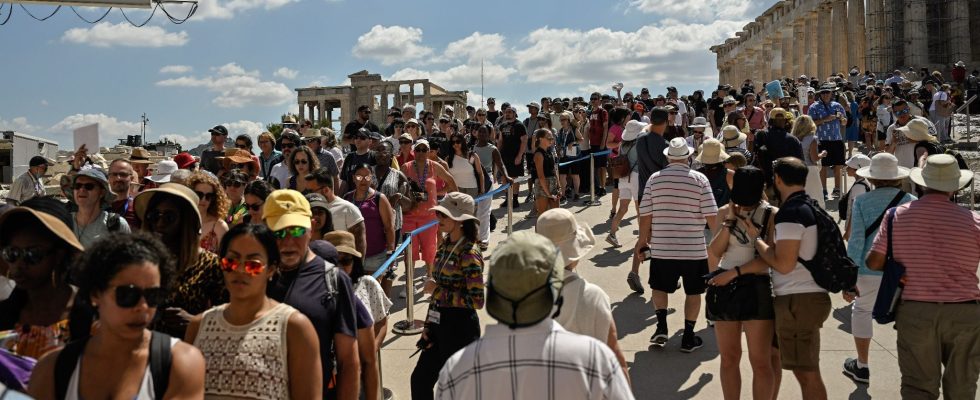20,000: this is the number of daily tourists who can access the‘Acropolis of Athens starting this Monday, April 1st. This restriction announced by the Greek Minister of Culture, Lina Mendoni, in August 2023, was until now in experimentation. It will now be sustainable, responding to the risks caused by the increase in the number of visitors to the country’s museums and archaeological sites.
Between 2022 and 2023, these places experienced an increase in attendance of 36.4% according to the Hellenic statistical authority (Elstat). In addition to this limitation, visitors will have to pay time-stamped entry tickets in order to better distribute flows.
In a few weeks it will be the turn of Venice, also a victim of overcrowding, to introduce restrictions. Already weakened by floods intensified by climate change, the Serenissima is suffocating under the weight of 120,000 daily tourists – according to estimates from the Sapiens Institute. From April 25 and until mid-July, the city will introduce a tax of 5 euros for people passing through for one day.
The idea of these measures is not to ban tourists, but to create awareness and a change in the way of consuming travel, judges Julien Buot. The director of the Agir pour du tourisme durable (ATD) association defends “travel less but better”. “It is not a question of advocating degrowth,” he explains, “but of offering more qualitative tourism by choosing stays that are certainly rarer, but longer.”
Solutions already implemented in Europe
Venice and Athens are not the only European destinations bracing themselves against the influx of tourists. Dubrovnik in Croatia, Barcelona and the Balearic Islands in Spain, all these destinations limit, in certain areas, the number of tourists authorized. In France, the island of Bréhat (Brittany) or the Calanques of Marseille ask visitors to anticipate their arrival by reserving time slots. Measures aimed at preserving the natural heritage of these exceptional sites.
Julien Buot recalls that the basis of a cultural activity is restriction. “It has never shocked anyone to have to pay or reserve to access a museum,” he notes. “But it concerns us when it comes to urban or natural spaces, because these places do not have the ‘used to be limited.’
A brake on the freedom to travel?
These practices may, however, raise some questions regarding the democratization of tourism. Especially when an entry cost is imposed like in Venice. “Tourism remains a right to be won. In France, one in two people cannot afford to go on vacation,” recalls the director of ATD. According to him, to move towards more sustainable and responsible tourism, all players in the sector must work better together, from consumers to tour operators, including public authorities and tourist offices.
The Normandy region is a good example. It offers all travelers coming by train, bus or bicycle to benefit from a reduction in several cultural and tourist sites. This “Normandy low-carbon tariff” was able to be put in place thanks to the association of museums, tourist offices and other professionals in the sector.
